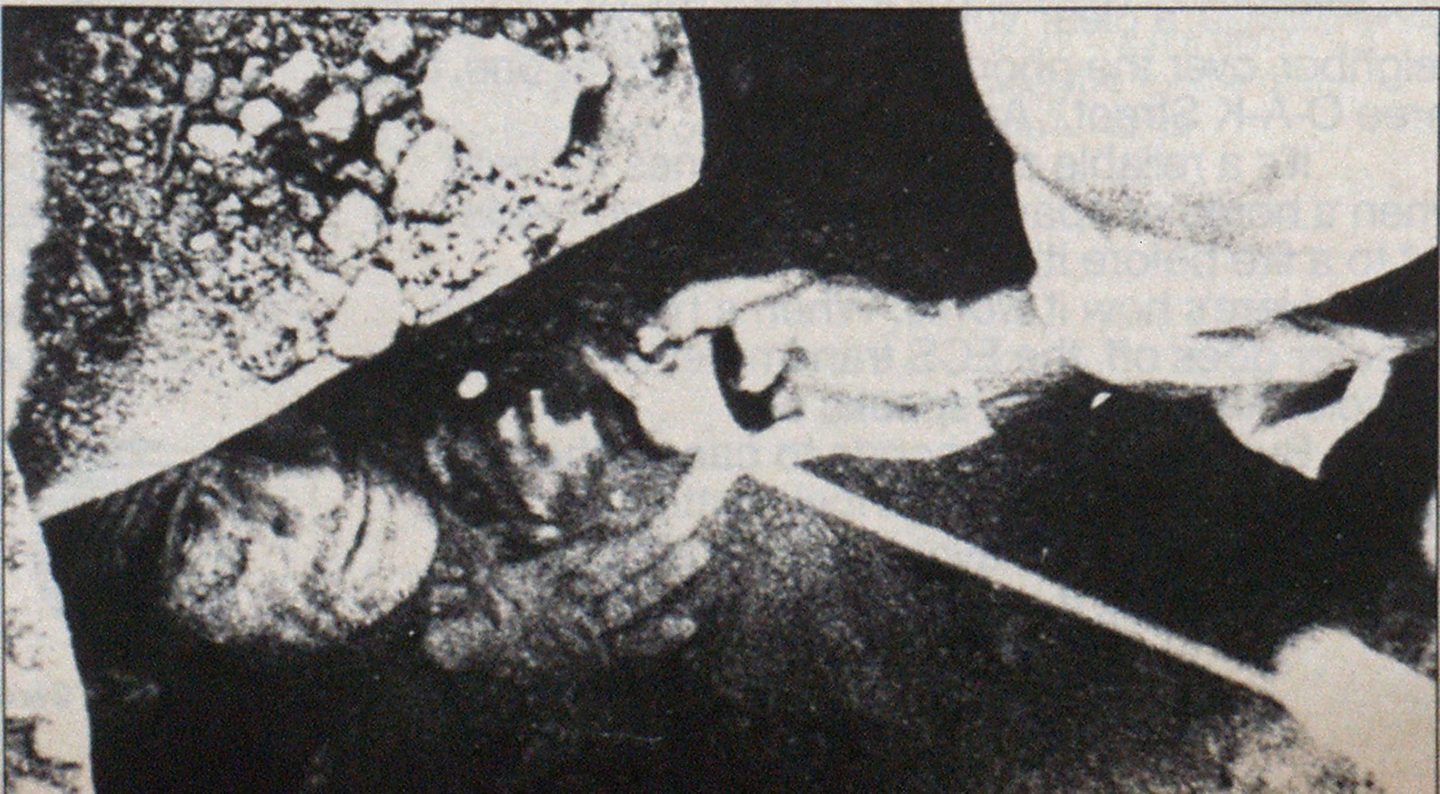
BURIED ALIVE
RESCUE/EMS
In a life and death situation, seconds count. Yet, nearly one hour had passed before the fire department was summoned to help unearth Charles Kessler, who had been buried alive under 10 feet of dirt after the unshored walls of a 20-foot hole sloughed in.
Kessler and his son Mike had dug a 15 x 10 x 20-foot hole in order to repair a leaking septic tank in the backyard of their Pocatello, Idaho, home. Mike had left the excavation site for 20 minutes, and upon returning, noticed that soil had slid from under the chicken coop, leaving the coop afloat on unstable ground. There was more than 10 feet of slough off in the hole. His father was nowhere to be found.
The Bannock County Sheriff’s Office, the Bannock County Volunteer Search and Rescue Croup, Chubbuck City Police, Idaho State Police and a dozen neighbors arrived to dig in Kessler’s last known position.
After about one hour, pleas for help were heard below ground, but Kessler had still not been unearthed.
It was at this point that an alarm was sent to the Pocatello Fire Department, bringing a minipumper with two fire fighters and an ambulance with two paramedics.
Fire fighters evacuated the hole area and had volunteers form a bucket brigade for dirt removal to minimize the risk of additional victims. The rocky terrain and dry, crumbly soil demanded extra care to prevent cave-ins. Lifelines were attached to the two emergency personnel who were digging by hand.
After about 30 minutes Kessler’s face was uncovered 1 ½ feet below the surface. A demand-type mask was put on Kessler’s face and a flat nose shovel held over his head and against the septic tank wall to prevent the slough off of more soil in his face while digging continued.
It was impossible for fire/rescue personnel to shore up the walls because of Kessler’s position. He was blocking the opening, and there was danger that shoring boards could fall in on him.
Kessler’s situation was critical. He was disoriented, blue about the lips, and experiencing difficulty in breathing from the pressure against his chest. However, Kessler was able to describe his position. He was upright with his legs pinned against boulders, his back against the septic tank walls, his left arm pinned against his body, and his right arm extended outward. The lower part of Kessler’s legs were held in quicksand-like mud that resulted from the tank’s leak.
Pocatello, located in the southeast section of Idaho, and surrounded on three sides by mountains, is the state’s second largest city, with a population of 50,000.
The Pocatello Fire Department is Idaho’s second largest fire department with 71 of the state’s 600 fire fighters.
The department is made up of three city fire stations and one municipal airport fire station. The city stations are equipped with three front-line 1250-1500-gpm diesel pumpers and three 1000-gpm pumpers in reserve; a 100-foot aerial; and a minipumper, which carries extrication equipment and is used in wildland fire fighting and rescue operations.
The airport station is equipped with a four-wheel-drive patrol (a 1973 pickup truck) with 50 gallons of AFFF and 450 pounds of dry chemicals; a Yankee Walters pumper-crash truck with foam, water and dry chemicals; and a military 010 crash truck with protein foam, water and a carbon dioxide extinguisher in reserve.
The department also has a city-county ambulance system which extends beyond Pocatello and covers Bannock County and portions of Power and Bingham Counties. More than 100,000 people are serviced by four front-line and two reserve ambulances. Fifteen members of the Pocatello Fire Department are certified as intensive care paramedics, four are certified as advanced emergency medical technicianambulance personnel, and the other 52 are certified EMTs.
The Pocatello Fire Department responds to approximately 4000 calls each year, ranging from industrial, chemical, military and domestic incidents to agricultural, recreational and wildland incidents.
Because Kessler’s body had formed an air pocket where the lid of the septic tank was partially pushed back, Kessler was able to breathe for nearly two hours totally buried.
Intravenous fluid and a cardiac monitor were started immediately upon uncovering Kessler’s chest and left arm, and a Kendrick extrication device was applied to his back for support as rescuers uncovered his waist.
Since Kessler had an extreme amount of circumferential pressure, he had to be removed at a rate slow enough to allow his body to compensate for the pressure difference. However, at this point a chicken flew over the extrication area and landed on the portion of the chicken coop which hung over the edge of the hole. The weight of the chicken caused enough instability to start a minor slide on Kessler and the rescuers.
Kessler struggled violently to free himself, causing more loose soil to fill in the hole. Seconds counted as Kessler’s condition worsened with his mental depression. Digging had to be rapidly increased. Shovels were again used, and rescuers frequently relieved one another from shovels to buckets to maintain the faster pace.
When sufficient clearance was finally attained, Kessler had to be pulled out of his knee-high boots, which were stuck in the sucking mud. Once freed, Kessler was placed in medical antishock trousers and taken to the hospital.
The entire ordeal lasted 3 ½ hours.
Thanks to the efforts of all the people involved, Kessler is alive and well.



